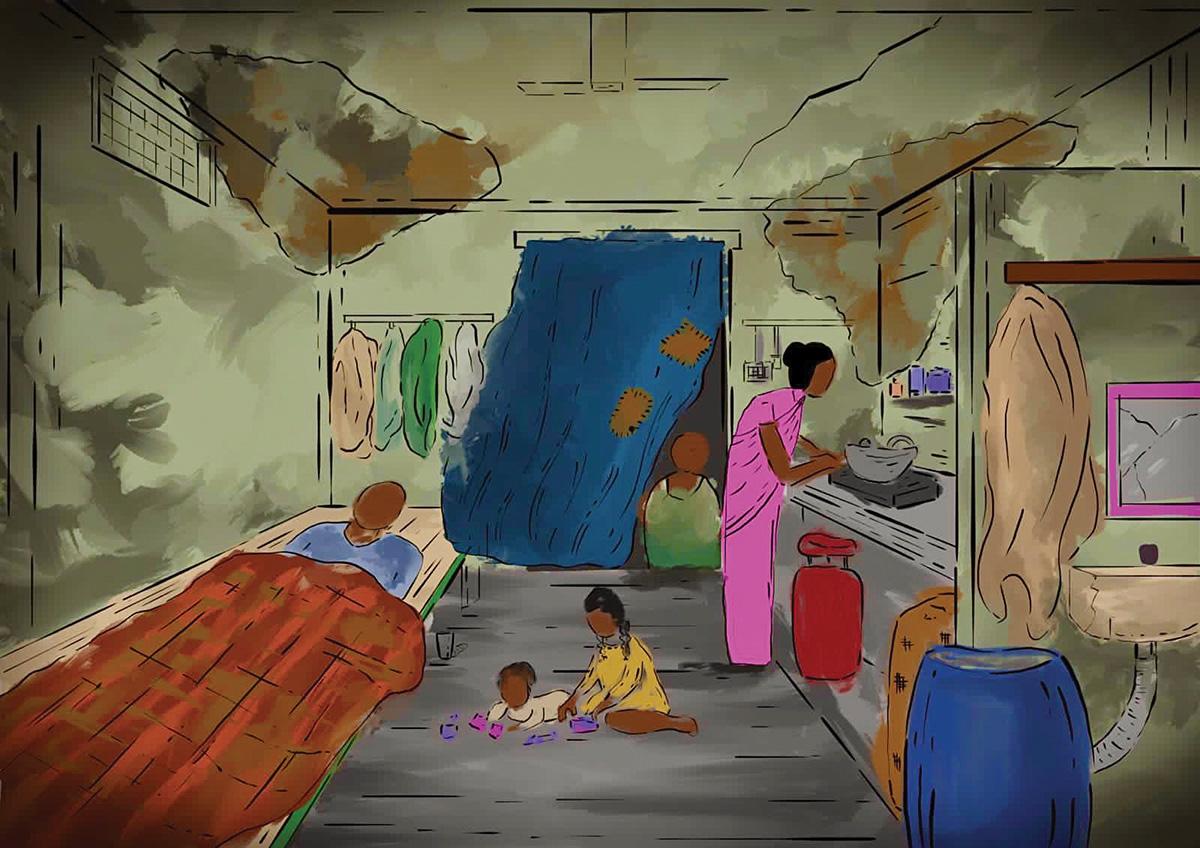
by Malvya Chintakindi, PhD Candidate, Department of Anthropology
“I don’t care if I live or die, I just need put some food on plate for my family. I don’t have any other support."
“I wish I did not get my daughter married at 15, but we couldn’t afford another mouth to feed or extra space for her in our one room to sleep. Afterall, I was married away when I was 12.”
“To the government, our bodies only matter during elections since the votes we cast are important for political gains. Because it is then, we are not untouchables.”
“I do not remember the last time my husband did not physically assault me. I went to the police, they said it is common among our communities to bear such violence. My husband took all my money and abandoned me and my three-year-old.”
"We are lesser humans. We work as manual scavengers. When patients soil their clothes, we clean them up. We clean and wash entire funeral houses. It is here that we are most important as it is only us who can cremate bodies—a dirty job.”
These quotes illustrate the lived experiences of women I have worked with in the past two years. They belong to backward caste communities—engaged in informal labor economy working jobs as manual scavengers, domestic help, construction labor, cleaners—in India. They constitute a whopping 90 percent of India’s working population, neither regulated nor protected by the state. My research delves into the short-term and potential long-term effects of COVID-19 on women belonging to backward castes engaged in informal labor work in the city of Hyderabad, state of Telangana, India. This in-depth ethnographic inquiry observed the research participants, women, within their localities for over a year (2020–2021) and adopts an approach rooted in intersectionality and complexity. It is within these communities that my research investigates questions of gender-based inequality, discrimination, and violence. Backward castes or Dalits, historically categorized as untouchables, to date face social stigma as manifested in day-to-day violence and lack of opportunities. Dalit women especially face triple marginality in terms of caste, class, and gender. In the informal economy, such women are considered “subalterns,” also called “living dead” or “urban poor,” heavily characterised by feminization of poverty, labour, migration, and exclusion.
The pandemic, my findings indicate, has only exacerbated the harsh realities of Dalit women through vaccine inequity, increased domestic violence, and loss of jobs. They are highly pressurized to navigate through internal family-based patriarchy-cum-poverty and state neglect. Moreover, these Dalit women, like the rest of the community, are forced to reproduce amongst themselves the vicious forms of their own subjugation. The pandemic has re-emphasized the need for a nuanced understanding of what entails rural vs. urban and informal vs. formal labor and their implications on gender equality. This research further aims to investigate how recognizing the identities and cultural contexts of backward caste communities are vital to their socio-economic upliftment. The many trials of being engaged in informal employment render such communities multiply vulnerable as the conditions of their personal and professional lives are interlinked and complex. Gendered and intersectional lenses are the need of the hour. The invisibility of women’s contribution, in general to the economy but also within their own families, is a testament to their experiences of inequity and inequality. The pandemic has brought to the fore complex social injustice situations that undermine the dignity of backward caste communities and their professions.
Undoubtedly, the economic impact of the pandemic on informal labor is multi-fold. The very first concern expressed by the informal labor community when discussing the effects of COVID-19 is regarding finances. It is to be emphasized that absolutely none of the women or their husbands have any agreement or contract with their employers, which is the typical characteristic feature of informal employment. Tremendous loss of income has occurred owing to market shutdowns, closing of businesses, and employers’ hesitation to re-employ domestic workers.
Females usually earn less than males in the informal labor market as they are employed in lower paying jobs than males. The decrease in the proportion of the income of the women’s husbands is more than the decrease in the proportion of the income of the women. Women’s jobs have become a safety net, especially amidst a pandemic when jobs of males engaged as construction workers or daily laborers have been hard hit owing to COVID-19 restrictions. However, the barriers of caste and socio-economic status make it difficult for the women to seek or receive financial help from their employers with ease. Women reported that lack of empathy and support from their employers has made them feel abandoned as most women working as domestic help interact with their employers on such a frequent basis, often sharing personal conversations—good, bad, and ugly. The pandemic has only further widened the gap between informal workers and formal workers, pushing the former into deeper financial loss with a rocky path to recovery. This also implies a widening gap between the haves and have-nots or the higher castes and backward castes.
Support and aid from the government and civil society actors have been sporadic. The perception toward the Anganwadi, a government childcare center in this region, is predominantly negative as women feel a lack of support, communication, and compensation.
About 30 percent of the participants reported high levels of domestic violence in general, irrespective of the pandemic. When probed about the conditions leading to violence, participants emphasized that alcohol was the primary reason behind their husbands’ erratic and harmful behavior. The participants couldn’t exactly distinguish between violence before and during the pandemic, pointing to the intensity of the violent conditions they endure regularly. Evidence from previous literature suggests that violence against women increases during and post disasters. It is noted that there is a dearth of research related to domestic violence during pandemics in India. In terms of the women’s agency, which is an important constituent of women’s empowerment, the distinction between how their voices and mobility must have changed in any fashion pre- and post-pandemic is blurry as it is too nascent to adjudge the same. The pandemic has only compounded the participants’ existing domestic and social problems. It serves as a push for urban governance to re-examine their engagement with informal settlements.
In the next few years of my PhD, I aim to further unpack the subaltern woman figure through an ethnographic analysis of institutional and policy measures among different minority ethnic groups in India. Towards this end, I will also delve into proposed but long overdue revisions to the Indian national women empowerment policy and the International Labor Organization’s definition of informal labor in reference to women. Ultimately, my research seeks to humanize the subaltern woman’s life aspirations for love, progress, and development in the global South.
—Malvya Chintakindi received a 2021–22 Graduate Student Research Award from CSWS.

